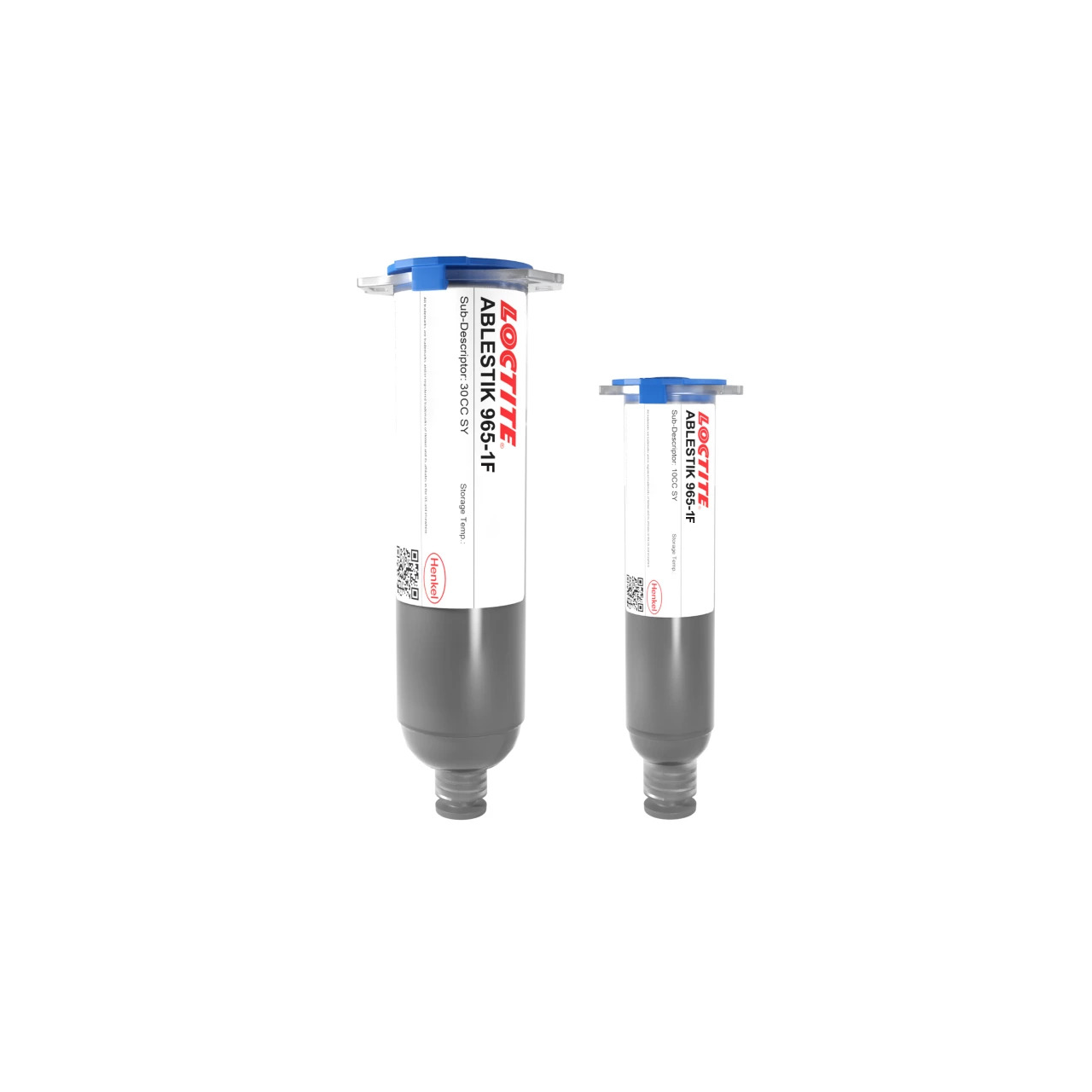LOCTITE ABLESTIK 965-1F
Harmonization Code : 3506.91.90.99 | Prepared glues and other prepared adhesives, not elsewhere specified or included; products suitable for use as glues or adhesives, put up for retail sale as glues or adhesives, not exceeding a net weight of 1 kg ; Adhesives based on polymers of headings 3901 to 3913 or on rubber; Other ; Other
Main features
- Low modulus
- Low contaminants
- Low viscosity version of 965-1L
Product Description
LOCTITE ABLESTIK 965-1F electrically conductive die attach adhesive is designed for bonding large die to copper leadframes. It has stress absorbing properties and offers a low modulus of elasticity.
LOCTITE ABLESTIK 965-1F is a silver filled, higher viscosity version of ABLEBOND 965-1L adhesive.
Cure Schedule
- 1 hour @ 150°C
Technical Specifications
| General Properties | |||||||||
| |||||||||
| Work life @25°C Work life @25°C Work life is the amount of time we have to work with a material until it is no longer able to be easily worked and applied on a substrate. It is based on the change in viscosity and it can rely on the application requirements. | 336 hours | ||||||||
| Physical Properties | |||||||||
| Viscosity Viscosity Viscosity is a measurement of a fluid’s resistance to flow. Viscosity is commonly measured in centiPoise (cP). One cP is defined as the viscosity of water and all other viscosities are derived from this base. MPa is another common unit with a 1:1 conversion to cP. A product like honey would have a much higher viscosity -around 10,000 cPs- compared to water. As a result, honey would flow much slower out of a tipped glass than water would. The viscosity of a material can be decreased with an increase in temperature in order to better suit an application | 18,000 mPa.s | ||||||||
| Chemical Properties | |||||||||
| |||||||||
| Water Extract pH | 4.6 | ||||||||




